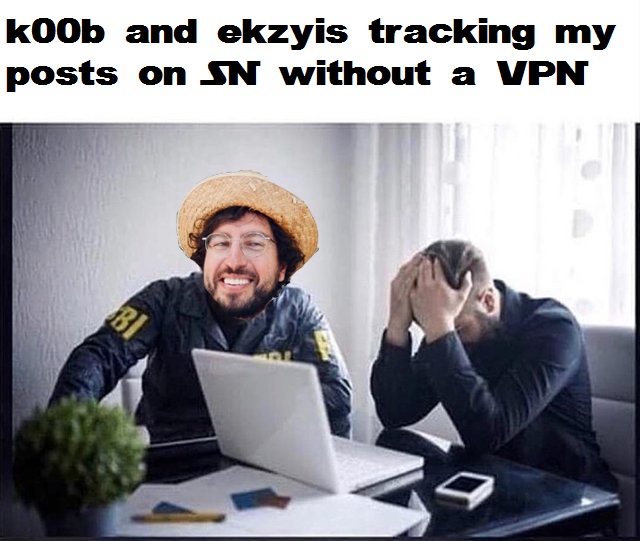I recently read Nick Szabo's Micropayments and Mental Transaction Costs paper. It's overly theoretical and a little bit scattered, but the gist is that probably people won't want to be micropaying their way around the internet.
Szabo's point is that there is a mental cost associated with making a payment, even a micropayment. And because of this, most people do not want to be confronted with frequent decisions about micropayments (should I pay for this now? is the rate worth it? am I being charged correctly? should I try to use a different vendor? will I want to spend this money on something else soon? and so on ad nauseum). Therefore, if micropayments ever become popular, software will need to mediate our interactions so we don't have to waste so much time thinking about tiny sums of money.
While reading that paper, it occured to me that I actually use micropayments every day: zapping on nostr and Stacker News. Using SN requires making lots of these kinds of decisions about tiny amounts of money, so why don't we feel exhausted? Usually, I come away from SN feeling exhilarated.
Micropayments are so much fun! /s
In the late 1990s, lots of people speculated about an internet full of micropayments. Micopayments on your email to prevent spam, micropayments on links to pay for content, micropayments to your ISP to establish the best price for bandwidth, micropayments to keep websites from selling your data, and--perhaps most importantly--micropayments so the internet wouldn't become a flashing cesspool of crappy ads.
Unfortunately, the 402 internet never came to fruition. Some people blamed the technology (micropayments didn't catch on because there wasn't any good internet money), but the consensus seemed to settle on the fact that users didn't want to waste their time thinking about whether or not they wanted to pay to click the link.
This hasn't stopped many bitcoiners from predicting a world full of micropayments for everything from podcasts to AI agents.
Pay-per-second Netflix
Sometimes you hear bitcoiners suggesting micropayments in the context of a service like Netflix. Instead of paying a flat monthly rate to watch movies, you pay by the movie or--better yet: you pay by the second you watch. But such an arrangement pretty quickly starts to sound unpleasant when you think it through:
- Would some movies be priced at different rates? (New movies? Popular movies?)
- What if you fall asleep while watching a show? (Sounds trivial, but you could see autoplay doing some real damage here.)
- What if the pricing changes and I don't notice? (Congestion pricing or opportunistic pricing a la horror movies getting more expensive right before Halloween.)
It seems like no one would bother switching to such a payment model unless it was dramatically cheaper than the current subscription pricing of the major streaming services. You'd have to save a lot of money to put up with all the fuss.
In the context of value-for-value wallets, I've heard discussions about thresholds and budgets for various apps (eg. the wallet needs to get my authorization before spending more than 50k sats on the Netflix app in a given month). But the concern is that even the trouble of setting such a budget becomes more of a headache than it's worth, and the people beg to be given a flat-rate king.
Stacker News with flat-rate pricing
There is no question that flat-rate pricing has dominated the market. Flat rates are great because you can make a decision about the price quickly and it is pretty easy to hold in your head as you use the service or good.
Imagine how a flat-rate pricing for SN might work: everyone pays a flat-rate to use stacker (say 10k sats a month). When you write a post, SN measures how many users click on it as well as how long users spend reading the post and perhaps whether or not they comment and how many comments are left on the post. At the end of the day or end of the month SN pays out all users some proportional amount based on how much "value" the user provided to the site. In writing this description, it feels a bit like how Million Sat Madness worked.
Would this method have a lower mental transaction cost than the current system? Perhaps, but it doesn't sound like very much fun. Of course, what we are talking about here isn't really zaps anymore, but rather SN's internal incentive structure. Zaps themselves come from users.
Autozaps
If Szabo is right that the reason people like flat-rate pricing is because they don't want to be bothered by decisions about trivial sums, another option might be autopay. When you put your bills on autopay, you are pretty much saying I don't want to think about the charges other than the total and I might not even look at that. If you trust the merchant or service, it's not such a bad idea.
How would your experience of SN change if SN did all the zapping for you? Imagine if you set a rate (perhaps 1 sat per second) and SN measured how long you took to read a post and zapped the post at your selected rate as you read. While there is something a little exciting about the concept, I have a feeling SN would quickly become a source of anxiety to me (read faster, those sats are valuable! Oh man, this is a long one, maybe just skim it...).
While the consensus in Szabo's time seemed to be that users would want to have software abstract away the hassle of decision-making around micropayments, Stacker News is clearly a case where such abstraction is not desirable.
Does bullishness nullify user frustration?
There's been a thought niggling at me in the back of my mind as I write this: perhaps Stackers don't mind the mental transaction costs of all these micropayments because they're operating out of a bitcoin bull mindset that imagines the true value of a sat as much higher than it currently trades for. That 100 sat zap may only be worth seven cents now, but true bitcoiners know it'll probably buy something like a motorcycle in the near future. Perhaps Stackers don't see zaps as micropayments at all.
But I don't think this is true. If the price of bitcoin doubled, I would expect zaps to decrease by about half in bitcoin terms (although perhaps there is some unit bias that affects this). At least for me, part of the pleasure in using SN is that the amounts can be so small. Something less than whatever the amount of value is currently expressed by $10 feels about right for a zap on a really, really good post. While many of the Stackers here are deft writers, quite frankly, I'm never paying any of you $100 for your post.
Micropayments are so much fun!
Stacker News actually works because Stackers get to think about the micropayments. Tossing some sats to a commenter or zapping the bananas out of a really great post feels good. The decision to zap doesn't feel like it carries a mental transaction cost at all, rather it's like the mental cost of playing an interesting game or reading an enjoyable story.
Sure, it takes your attention and thought to enjoy a story or play a game, yet to describe these things as costs isn't quite right. It's similar to working out (physical exercise): we force our bodies to do work but it's not a cost to us in the same sense as if we were deciding whether to go somewhere and had to evaluate how much effort it would take to get there.
Stacker News is brilliantly gamified. It's not just the micropayments for content and interaction (zaps), but also the daily rewards, the cowboy hats, the leaderboard, and its many other excellent little details. Perhaps this gamification is what insulates Stackers from mental fatigue as they continuously make decisions about tiny sums of money.
Do micropayments work because of the cowboy motif?
Szabo does not abandon the idea of micropayments altogether. He concludes by predicting,
For the normal accounting transaction costs, which are currently too high for micropayments, we need better interactive visual metaphors.
Has SN somehow hit upon this "better interactive visual metaphor"? I'm not sure. It's possible micropayments are uniquely successful on SN and that they wouldn't work outside the context of an internet forum moderated by money.
Szabo's paper is full of examples like buying apples or paying for phone service. While he does mention content, his thoughts about micropayments are entirely couched in the context of a customer's experience. He doesn't think about how it feels to receive micropayments.
Stacker News is like Hacker News but we pay you. It is possible the micropayments work because they involve the prospect of making money. Stacker News is not a place where content creators get paid by content consumers. Stacker News is a place where using the internet is intermediated by micropayments. The new interactive visual metaphor that Szabo was hoping for might be earning money.

